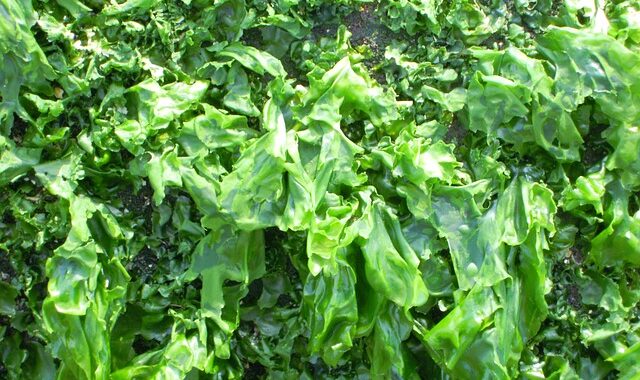Cough And Cold In A Child

I often meet in my office small patients, obese children or children suffering from autoimmune diseases. Many times, regardless of the problem with which I came across, there is the same problem – a nasal runny nose, infections of the upper respiratory tract, bronchitis, coughing, sluggishness.
When I look at the menus of these children, I observe with anxiety large amounts of dairy products in my diet. Of course, we are bombarded with information from all over the world that milk is healthy.
Even in schools it is said that every child should drink it for strong and healthy bones to make it big and develop well. We are also bombarded with advertisements for desserts, yoghurts, milk drinks with chocolate or fruit – because dairy products are a source of wholesome protein and calcium.
However, it turns out that dairy products are not the best product for children. And certainly not the one that is offered in the store.
CLA Acids
The milk available in the shop comes from a cow who has been standing in a barn all her life with limited natural light, does not graze on a green meadow, does not eat her natural food. Therefore, this milk will not be rich in CLA acids, which are particularly beneficial for our body.
CLA is conjugated linoleic acid. It is the only fatty acid naturally occurring in nature, has a trance configuration and is the only one among the trances that is beneficial for the body.
Only milk from cows grazing in the green meadows will be rich in trans-fats (CLA) from the grass and processed by the grass. CLA acids are essential for the nervous system, for the prevention of autoimmune diseases, cancer and atherosclerosis. They are also essential for the proper development of the child’s brain and for the immune system.
Therefore, milk fats are essential in a child’s diet, but their origin is extremely important – from cows, goats, sheep that have eaten naturally. And while a goat or a sheep really graze, in the case of a cow there is no such certainty.
Live bacterial cultures in yoghurts
CLA acids will probably not be found in industrial milk, which is heat-treated. UHT milk, sterilized, completely devoid of living organisms (I call it “corpse soup”) contains both killed pathogens and good milk cultures.
During the yoghurt production process, live bacteria cultures from the powder are added from this milk and the result is that the yoghurt has probably not undergone any fermentation (it contains a lot of carbohydrates, which should be reduced during the fermentation process). Such a product has traces of living bacteria (if at all) and does not necessarily have a good effect on the body.

So yoghurt, kefir, cottage cheese or buttermilk are not a good source of living bacteria cultures. It is much easier to obtain them from pickled cucumbers, cabbage or beetroot and – as it used to be – from the soil.
In the past, children played a lot in the backyard, had dirty hands, and did not care as much about hygiene as they do now. However, many parents are afraid of such unhygienic behavior, so I would recommend the supplementation of living cultures with bacteria from vermicompost or SBO (body biotics, in Poland unavailable, unfortunately), which may be a solution to problems with intestinal bacterial flora in children.
Calcium
The calcium contained in milk is usually no longer in use. A number of studies show that with increasing milk consumption, the incidence of osteoporosis increases in society. It can therefore be concluded that dairy products are not such a good source of calcium.
Protein
A good source of protein is just an egg. If your child is intolerant of eggs, meat products and fish are the source of the most biologically valuable, easily digestible protein. There is less protein in dairy products than in carbohydrates. In the case of tvarůžky, yoghurts and milk, there is a predominance of carbohydrates (about 6 g of carbohydrates per 2-3 g of protein). The situation is different with cottage cheese and yellow cheese, which are better in this respect.
Cough, rhinitis and dairy products
Rhinitis, coughing, infections of the upper respiratory tract are most often a problem associated with eating dairy products, which loosens the body, causes increased secretion in the nose, the appearance of hoarseness, the feeling of klucha in the throat, which can also be a symptom of reflux.
Reflux, in turn, may also be the result of eating dairy products badly digested by the stomach. Children aged 2-3 years have an enzyme in their digestive system called rennet, thanks to which they digest dairy products well. With age, this enzyme is less and less active and the digestion of dairy products deteriorates.
In younger children, problems with upper respiratory tract in 90% of cases are the result of eating dairy products or cereal products – most often wheat.
So, first of all, I would suggest removing dairy products from a child’s diet and checking if his or her respiratory system has improved. Often doctors suggest removing the tonsils, which is not the solution to the problem – its root cause remains, and after the removal of the tonsils often other ailments appear.
If your child often has excessive mucus, rhinitis, cough – remove dairy products from his/her diet, because it is not necessary.
I have also noticed a strange trend lately. Nutritionists for reflux in a child recommend further consumption of dairy products, including skimmed milk. Instead of wholemeal bread they recommend light, wheat bread.
This is an absurd situation. A child needs milk fats, so never take real butter away from him or her, even if he or she does not tolerate dairy products. We are looking for butter from cows grazing on green or goat pastures. If he tolerates dairy products well, give them in full fat form.


 SEO for E-Commerce Platforms
SEO for E-Commerce Platforms  Air Conditioning Repairs You Should Know About
Air Conditioning Repairs You Should Know About  Sea Moss into Your Daily Meals
Sea Moss into Your Daily Meals  Data Storage for Personalized Medicine
Data Storage for Personalized Medicine